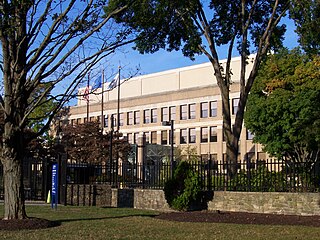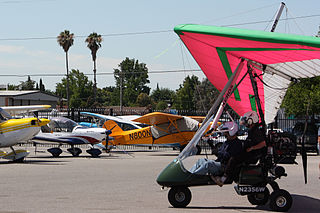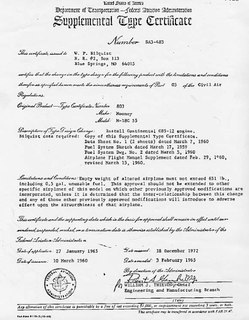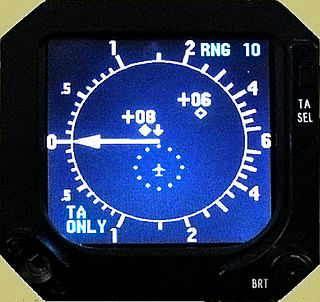
Pratt & Whitney is an American aerospace manufacturer with global service operations. It is a subsidiary of United Technologies (UTC). Pratt & Whitney's aircraft engines are widely used in both civil aviation and military aviation. Its headquarters are in East Hartford, Connecticut. As one of the "big three" aero-engine manufacturers, it competes with General Electric and Rolls-Royce, although it has also formed joint ventures with both of these companies. In addition to aircraft engines, Pratt & Whitney manufactures gas turbines for industrial and power generation, and marine turbines. As of 2014, the company reported having 31,500 employees supporting more than 11,000 customers in 180 countries around the world. In 2013, Pratt & Whitney's revenue totaled $14.5 billion.
The Federal Aviation Regulations, or FARs, are rules prescribed by the Federal Aviation Administration (FAA) governing all aviation activities in the United States. The FARs are part of Title 14 of the Code of Federal Regulations (CFR). A wide variety of activities are regulated, such as aircraft design and maintenance, typical airline flights, pilot training activities, hot-air ballooning, lighter-than-air aircraft, man-made structure heights, obstruction lighting and marking, and even model rocket launches, model aircraft operation, sUAS & Drone operation, and kite flying. The rules are designed to promote safe aviation, protecting pilots, flight attendants, passengers and the general public from unnecessary risk. Since 1958, these rules have typically been referred to as "FARs", short for Federal Aviation Regulations. However, another set of regulations is titled "Federal Acquisitions Regulations", and this has led to confusion with the use of the acronym "FAR". Therefore, the FAA began to refer to specific regulations by the term "14 CFR part XX".

A private pilot licence (PPL) or, in the United States, a private pilot certificate, is a type of pilot licence that allows the holder to act as pilot in command of an aircraft privately. The licence requirements are determined by the International Civil Aviation Organisation (ICAO), but implementation varies widely from country to country. According to the ICAO, it is obtained by successfully completing a course with at least 40 hours of flight time, passing seven written exams, completing a solo cross country flight, and successfully demonstrating flying skills to an examiner during a flight test. In the United States, pilots can be trained under Title 14 of federal code part 141, which allows them to apply for their certificate after as few as 35 hours. However, most pilots require 60–70 hours of flight time to complete their training. The minimum age for a student pilot certificate is 14 for balloons and gliders, and 16 for powered flight. The minimum age for a private pilot certificate is 16 for balloons and gliders, and 17 for powered flight. Pilots can begin training at any age and can solo balloons and gliders from age 14, and powered aircraft from age 16.
Aeronautical Engineers Australia (AEA) is an Australian aeronautical engineering consultancy and aircraft technical service provider. It is the largest civil aircraft design organisation in the Asia Pacific region and is now headquartered in Adelaide.

The European Union Aviation Safety Agency or EASA is an agency of the European Union (EU) with responsibility for civil aviation safety. It carries out certification, regulation, and standardisation, and also performs investigation and monitoring. It collects and analyses safety data, drafts and advises on safety legislation, and coordinates with similar organisations in other parts of the world. The idea of a European-level aviation safety authority goes back to 1996, but the agency was not legally established until 2002. It began its work in 2003.

Aircraft Maintenance Technician (AMT), refers to a licensed qualification for carrying out aircraft maintenance. Aircraft Maintenance Technicians (AMTs) inspect and perform or supervise maintenance, preventive maintenance, and alteration of aircraft and aircraft systems.

Pilot certification in the United States is typically required for an individual to act as a pilot-in-command of an aircraft. It is regulated by the Federal Aviation Administration (FAA), a branch of the U.S. Department of Transportation (USDOT). A pilot is certified under the authority of Parts 61, under 141 of Title 14 of the Code of Federal Regulations, also known as the Federal Aviation Regulations (FARs), or under part 107 rules for drone operation.

A light-sport aircraft (LSA), or light sport aircraft, is a fairly new category of small, lightweight aircraft that are simple to fly. LSAs tend to be heavier and more sophisticated than ultralight aircraft, but LSA restrictions on weight and performance separates the category from established GA aircraft. There is no standard worldwide description of an LSA.
A Technical Standard Order (TSO) is a minimum performance standard issued by the United States Federal Aviation Administration for specified materials, parts, processes, and appliances used on civil aircraft. Articles with TSO design approval are eligible for use on the United States type certified products by following a much lighter process than similar non-TSO approved part, provided the TSO standard meets the aircraft requirements. The TSO authorization or a letter of TSO Design Approval does not necessarily convey approval for installation. See 14 CFR Part 21 Subpart O.

A supplemental type certificate (STC) is a national aviation authority-approved major modification or repair to an existing type certified aircraft, engine or propeller. As it adds to the existing type certificate, it is deemed "supplemental". In the United States issuance of such certificates is under the purview of the Federal Aviation Administration (FAA).
Parts Manufacturer Approval (PMA) is an approval granted by the United States Federal Aviation Administration (FAA) to a manufacturer of aircraft parts.

The pilot in command (PIC) of an aircraft is the person aboard the aircraft who is ultimately responsible for its operation and safety during flight. This would be the captain in a typical two- or three-pilot aircrew, or "pilot" if there is only one certificated and qualified pilot at the controls of an aircraft. The PIC must be legally certificated to operate the aircraft for the specific flight and flight conditions, but need not be actually manipulating the controls at any given moment. The PIC is the person legally in charge of the aircraft and its flight safety and operation, and would normally be the primary person liable for an infraction of any flight rule.

Airworthiness is the measure of an aircraft's suitability for safe flight. Certification of airworthiness is conferred by a certificate of airworthiness from the state of aircraft registry national aviation authority, and is maintained by performing the required maintenance actions.
In the United States, skydiving is a self-regulated sport, which means skydivers, in the US, voluntarily follow a set of basic safety requirements established by the U.S. Parachute Association. Federal requirements can be found in the Federal Aviation Regulations. Most of the regulations concern the aircraft, pilot and rules of flight. However, 14 CFR Part 105, "Parachute Operations" regulates when and where jumps may be made and designates the requirements for parachute equipment and packing. For example, 14 CFR Part 105 requires the person packing either the main chute or the reserve parachute to be a certificated rigger, which means he or she has taken an FAA-approved training course and has passed rigorous FAA testing.

In aviation, V-speeds are standard terms used to define airspeeds important or useful to the operation of all aircraft. These speeds are derived from data obtained by aircraft designers and manufacturers during flight testing for aircraft type-certification testing. Using them is considered a best practice to maximize aviation safety, aircraft performance or both.
A Designated Airworthiness Representative (DAR) is a private person designated by the United States Federal Aviation Administration to act on its behalf in the certification of type certificated and amateur-built aircraft for the issuance of airworthiness certificates, special flight permits, import aircraft, export certificates for products and articles, conformity inspections and field approvals for repair and alterations. Most DARs have limited and/or certain "functions" authorized by the FAA based on their experience and technical background. A DAR may charge a fee for his or her services.
The Modification and Replacement Parts Association is the Washington, D.C.-based trade association that represents manufacturers of government-approved after market aircraft parts. These aircraft parts are often known as PMA parts, from the acronym for Parts Manufacturer Approval. The manufacture of PMA parts is regulated in the United States by the Federal Aviation Administration.
Unapproved aircraft parts are aircraft parts not approved by civil aviation authorities for installation on type certified aircraft.













